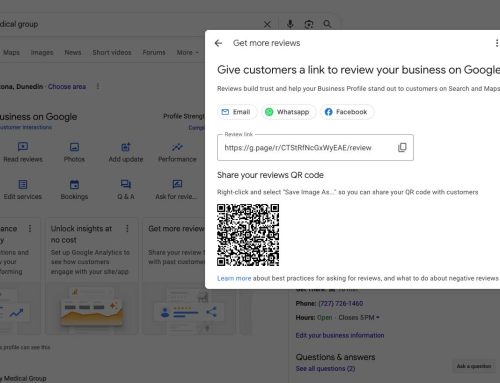
Are you struggling to improve your website‘s search engine rankings? This comprehensive guide to pre-post SEO strategies will help you boost your online visibility and drive more organic traffic. We’ll cover effective pre-SEO techniques, post-SEO practices, and the latest trends in search engine optimization. You’ll learn how to implement technical SEO improvements and build a sustainable strategy for long-term success. By the end of this guide, you’ll have the knowledge and tools to master pre-post SEO and outperform your competitors in search results.
Understand the Importance of Pre-Post SEO Strategies
Pre-post SEO strategies are crucial for optimizing search visibility and sustaining rankings. This section explores key aspects of SEO, including pre-optimization techniques, post-optimization practices, performance metrics, user experience, and content relevancy. Understanding these elements helps in creating effective SEO campaigns that drive traffic and engagement. Proper use of databases, grammar, content creation, meta elements, and images plays a vital role in successful SEO implementation.
Recognize How Pre-Optimization Impacts Search Visibility
Pre-optimization significantly impacts search visibility by laying the foundation for effective SEO strategies. By focusing on data-driven approaches, marketers can develop targeted content descriptions that resonate with their audience. This process involves leveraging various marketing techniques, including email marketing, to enhance visibility. Additionally, implementing structured data formats like JSON can improve search engine understanding of content, ultimately boosting visibility in search results.
Analyze the Role of Post-Optimization in Sustaining Rankings
Post-optimization plays a crucial role in sustaining rankings by continually refining SEO strategies after initial implementation. This process involves monitoring performance metrics, adjusting content based on user engagement, and leveraging social media platforms to enhance visibility. Web development techniques, particularly in WordPress, can be utilized to improve site structure and loading speeds. Additionally, focusing on local search optimization and implementing proper nofollow attributes can help maintain and improve search rankings over time.
Identify Key Metrics for Measuring SEO Performance
Key metrics for measuring SEO performance include organic traffic, backlink quality, and search engine rankings on platforms like Microsoft Bing. Marketers should analyze these metrics as part of their overall marketing strategy, using tools that provide comprehensive information about website performance. Implementing XMLsitemaps can improve crawlability and indexing, contributing to better SEO results.
Explore the Connection Between User Experience and SEO
User experience and SEO are closely intertwined, with Google search algorithms prioritizing websites that offer excellent user experiences. A well-designed website with intuitive navigation and fast loading speeds not only pleases visitors but also satisfies web crawlers, leading to improved search rankings. Effective link building strategies and the implementation of APIs can enhance both user experience and SEO performance, creating a symbiotic relationship that drives organic traffic and engagement.
Learn How Content Relevancy Drives Traffic and Engagement
Content relevancy drives traffic and engagement by aligning web pages with user intent and search engine algorithms. Effective use of CSS enhances usability, making content more accessible and visually appealing. By focusing on relevant topics and incorporating appropriate keywords, websites can improve their visibility in search results, leading to increased organic traffic. Implementing proper octal file permissions ensures secure content delivery, further enhancing user trust and engagement.
Implement Effective Pre-Seo Techniques for Success
Effective pre-SEO techniques are crucial for successful internetmarketing. This section explores conducting thorough keyword research, optimizing website structure for crawlability, developing high-quality content matching user intent, using meta tags and descriptions to attract clicks, and building internal links for enhanced navigation. These strategies help prevent spamdexing, improve site audits, and ensure content originality while avoiding plagiarism. Proper implementation of tags and optimization techniques lays a strong foundation for SEO success.
Conduct Thorough Keyword Research to Target Your Audience
Conducting thorough keyword research is essential for targeting the right audience and improving customer engagement. SEO professionals utilize tools like Google Analytics to analyze user behavior and identify relevant search terms. This process helps create content that aligns with user intent and legal requirements, potentially leading to higher conversions. By understanding search patterns, businesses can optimize their websites, including PDF resources, to better serve their target market and improve search rankings.
Optimize Website Structure for Better Crawlability
Optimizing website structure enhances crawlability, improving search engine performance and brand awareness. Using proper HTML elements and anchor text helps search engines navigate and understand content effectively. Implementing a clear hierarchy with roman numerals for headings aids in organizing information logically. Integrating a chatbot can improve user experience and provide valuable data for further optimization efforts.
Develop High-Quality Content That Matches User Intent
Developing high-quality content that matches user intent is crucial for effective pre-SEO techniques. Web developers can leverage javascript to enhance document interactivity and user experience, ensuring that content not only meets search engine criteria but also engages visitors. By focusing on readability and incorporating server-side optimizations, websites can deliver content that aligns with user expectations and search queries, ultimately improving search rankings and user satisfaction.
Use Meta Tags and Descriptions to Attract Clicks
Effective use of meta tags and descriptions plays a crucial role in attracting clicks and improving search engine rankings. By incorporating relevant keywords and conducting thorough research, SEO professionals can create compelling meta descriptions that accurately reflect page content and entice users to click through. Proper implementation of HTTP headers and analytics tools helps monitor the performance of these elements, allowing for continuous optimization and improved brandvisibility in search results.
Build Internal Links to Enhance Site Navigation
Building internal links enhances site navigation and improves the overall structure of a website on the World Wide Web. By strategically linking related content, SEO professionals can increase the density of valuable information within each paragraph, guiding users and search engines through the site’s hierarchy. Utilizing a paraphrasetool can help create unique anchor texts for these internal links, ensuring a natural flow of content while maintaining keyword relevance.
Execute Comprehensive Post-Seo Practices for Growth
Executing comprehensive post-SEO practices is crucial for sustained growth. This section explores monitoring website performance with analytics tools, adjusting strategies based on user behavior, updating content for relevance, implementing backlink strategies, and leveraging social media. These practices optimize navigation, utilize artificial intelligence for improved algorithms, and enhance citation authority. Proper implementation ensures password-protected content remains accessible while boosting overall SEO effectiveness.
Monitor Website Performance With Robust Analytics Tools
Robust analytics tools enable businesses to monitor website performance and optimize their return on investment. These tools track key metrics, including keyword rankings and user behavior, providing insights for effective keyword research. By analyzing data on page load times and faviconvisibility, companies can improve user experience and search engine rankings. Analytics platforms also facilitate the upload and tracking of decimal-based data, allowing for precise measurement of SEO efforts and overall website performance.
Adjust Strategies Based on User Behavior and Feedback
Adjusting strategies based on user behavior and feedback is crucial for optimizing SEO performance. Google Search Console provides valuable data on user interactions, allowing marketers to analyze click-through rates and adjust metadata accordingly. By examining sitemaps and user flow through Google Chrome‘s developer tools, SEO professionals can identify areas for improvement and optimize content to increase the percentage of engaged visitors. This data-driven approach ensures that SEO strategies remain aligned with user preferences and search engine algorithms.
Update and Refresh Content to Maintain Relevance
Updating and refreshing content is crucial for maintaining relevance in technical SEO practices. Web analytics tools help identify outdated content, allowing SEO professionals to prioritize updates. By incorporating ascii-encoded elements and contextual advertising strategies, businesses can enhance their content’s visibility and appeal to search engines. Regular content refreshes also provide opportunities to optimize for new keywords and improve overall search rankings.
Implement Backlink Strategies to Boost Authority
Implementing effective backlink strategies is crucial for boosting a website‘s authority and improving search engine optimization. SEO professionals can leverage cache techniques to ensure fast loading times, enhancing user experience and attracting quality backlinks. By creating content in multiple languages and utilizing targeted advertising, websites can expand their reach and attract diverse, authoritative links. This approach not only improves search rankings but also enhances the overall user experience, contributing to long-term SEO success.
Engage in Social Media to Increase Content Reach
Engaging in social media platforms significantly increases content reach and enhances SEO performance. By sharing optimized content across various social networks, businesses can drive traffic to their websites, improve brandvisibility, and build valuable backlinks. Social media engagement also provides opportunities for community building and customer interaction, which can lead to increased brand loyalty and organic sharing of content, further amplifying its reach and impact on search engine rankings.
Stay Ahead With the Latest SEO Trends and Updates
Staying ahead in SEO requires constant vigilance and adaptation. This section explores crucial aspects of modern SEO, including monitoring algorithm changes, adapting to evolving search behavior, leveraging advanced SEO tools, optimizing for voice search, and implementing mobile-first indexing strategies. By mastering these elements, SEO professionals can maintain competitive edge and drive sustainable results in the dynamic digital landscape.
Follow Industry News for Algorithm Changes and Impacts
SEO professionals must stay informed about algorithm changes and their impacts to maintain effective strategies. By regularly monitoring industry news sources, practitioners can anticipate shifts in search engine algorithms and adjust their tactics accordingly. This proactive approach allows businesses to adapt quickly, minimizing potential negative impacts on their search rankings and visibility.
Adapt to Evolving Search Behavior of Online Users
SEO professionals must adapt their strategies to align with evolving search behavior. Users increasingly rely on voice search and mobile devices, preferring conversational queries and local results. This shift requires optimizing content for natural language processing and focusing on long-tail keywords that match user intent. By analyzing search trends and user data, SEO experts can refine their approach to meet changing user expectations and maintain search visibility.
Explore Advancements in SEO Tools and Technologies
SEO professionals must stay informed about advancements in tools and technologies to maintain competitive edge. Modern SEO platforms offer advanced features like AI-powered keyword research, automated site audits, and real-time ranking tracking. These tools enable SEO experts to analyze vast amounts of data quickly, identify trends, and make data-driven decisions to improve search visibility and performance.
Incorporate Voice Search Optimization Techniques
Voice search optimization techniques have become essential for modern SEO strategies. SEO professionals must adapt their content to match natural language patterns, focusing on long-tail keywords and question-based queries. By structuring content to directly answer common voice search questions and implementing schema markup, websites can improve their chances of appearing in voice search results. This approach not only enhances visibility but also improves user experience for those utilizing voice-activated devices.
Consider Mobile-First Indexing Strategies for Sites
Mobile-first indexing strategies have become crucial for modern SEO practices. Search engines now prioritize mobile versions of websites for ranking and indexing, reflecting the growing prevalence of mobile device usage. SEO professionals must optimize site speed, responsive design, and content layout for smaller screens to ensure optimal performance in mobile search results. By implementing these strategies, websites can improve their visibility and user experience across all devices, ultimately driving better search rankings and increased organic traffic.
Master Technical SEO to Improve Overall Performance
Technical SEO is crucial for enhancing overall website performance. This section explores optimizing website speed, ensuring mobile responsiveness, utilizing structured data, conducting regular audits, and implementing HTTPS. By mastering these technical aspects, website owners can improve user experience, search visibility, and security, ultimately boosting their site’s performance in search engine rankings.
Ensure Website Speed Is Optimized for User Experience
Website speed optimization is crucial for enhancing user experience and improving search engine rankings. SEO professionals focus on minimizing page load times by compressing images, leveraging browser caching, and reducing server response times. These techniques not only improve user satisfaction but also contribute to higher conversion rates and lower bounce rates, ultimately boosting a site’s overall performance in search results.
Address Mobile Responsiveness for Diverse Devices
Mobile responsiveness is essential for technical SEO, ensuring websites function optimally across various devices. SEO professionals implement responsive design techniques, using flexible layouts and CSS media queries to adapt content presentation based on screen size. This approach improves user experience, reduces bounce rates, and positively impacts search rankings, as search engines prioritize mobile-friendly websites in their algorithms.
Utilize Structured Data to Enhance Search Visibility
Structured data implementation enhances search visibility by providing search engines with clear information about page content. SEO professionals use schema markup to define specific elements such as products, reviews, and events, enabling rich snippets in search results. This approach improves click-through rates and helps search engines understand context, ultimately leading to better rankings and increased organic traffic.
Conduct Regular Audits to Find and Fix Technical Issues
Regular technical audits are essential for maintaining optimal website performance and search enginevisibility. SEO professionals conduct comprehensive scans to identify issues such as broken links, duplicate content, and crawl errors. By addressing these problems promptly, websites can improve their overall health, ensuring better user experience and higher search rankings. Regular audits also help detect security vulnerabilities and performance bottlenecks, allowing for proactive optimization and maintenance.
Implement HTTPS for Secure Browsing Experiences
Implementing HTTPS is crucial for providing secure browsing experiences and improving search rankings. HTTPS encryption protects user data, builds trust, and is a ranking factor for search engines. SEO professionals ensure proper implementation of SSL certificates, redirect HTTP traffic to HTTPS, and update internal links to maintain site integrity. This approach not only enhances security but also contributes to better user engagement and improved search visibility.
Build a Sustainable SEO Strategy for Long-Term Success
Building a sustainable SEO strategy involves developing a content calendar, fostering community engagement, evaluating tactics based on data insights, training team members, and setting realistic goals. These elements work together to create a long-term approach that adapts to changing search engine algorithms and user behaviors, ensuring consistent improvement in search rankings and organic traffic over time.
Develop a Content Calendar to Plan Regular Updates
A content calendar is a crucial tool for maintaining a consistent SEO strategy. By planning regular updates, businesses ensure a steady flow of fresh, relevant content that engages users and signals to search engines that the site is active and valuable. This approach allows for strategic keyword targeting, topic coverage, and timely content release, aligning with industry trends and user interests. Effective content calendars also facilitate resource allocation and team coordination, ensuring that SEO efforts remain focused and productive over time.
Foster Community Engagement Through Interactions
Fostering community engagement through interactions is a vital component of sustainable SEO strategies. By actively participating in online discussions, responding to comments, and encouraging user-generated content, businesses can create a loyal following that naturally boosts their search visibility. This approach not only increases dwell time and reduces bounce rates but also generates valuable backlinks and social signals, contributing to improved search rankings over time.
Evaluate and Revise SEO Tactics Based on Data Insights
Evaluating and revising SEO tactics based on data insights is crucial for long-term success. SEO professionals analyze performance metrics, user behavior, and search trends to identify areas for improvement. By continuously refining strategies based on concrete data, businesses can adapt to algorithm changes, evolving user preferences, and competitive landscapes, ensuring their SEO efforts remain effective and yield sustainable results over time.
Train Team Members to Understand SEO Fundamentals
Training team members to understand SEO fundamentals is essential for building a sustainable SEO strategy. By educating staff across various departments on basic SEO principles, organizations can ensure that all content creation and website updates align with best practices. This approach fosters a culture of SEO awareness, enabling team members to contribute effectively to the company’s overall search enginevisibility and performance.
Set Realistic Goals and Timelines for SEO Progress
Setting realistic goals and timelines for SEO progress is crucial for sustainable success. SEO professionals establish measurable objectives aligned with business goals, considering factors such as current rankings, competition, and resource availability. By breaking down long-term targets into short-term milestones, teams can track progress effectively and make necessary adjustments. This approach helps manage expectations, maintain motivation, and demonstrate the value of SEO efforts to stakeholders.
Unlock the Power of Pre-Post SEO for Your Website
Mastering pre-post SEO strategies is essential for achieving and maintaining strong search engine rankings. By implementing effective pre-optimization techniques, conducting thorough keyword research, and developing high-quality content, businesses can lay a solid foundation for their SEO efforts. Post-optimization practices, including regular performance monitoring, content updates, and backlink strategies, ensure continued relevance and authority in search results. Staying informed about the latest SEO trends, optimizing technical aspects, and building a sustainable long-term strategy are crucial for adapting to evolving search algorithms and user behaviors, ultimately driving sustainable success in the competitive digital landscape.


